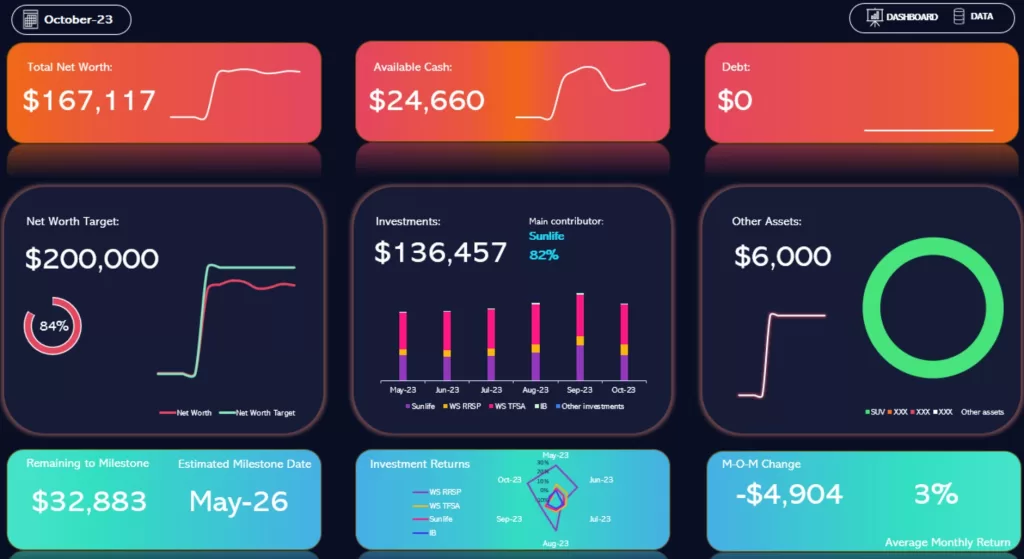Life is unpredictable, and crises may happen at times. A financial safety net is essential for unexpected medical emergencies, home repairs, and job losses. Financial planning includes building emergency fund for peace of mind and security. This article discusses emergency fund building and offers innovative ways to achieve it.
The Significance of Building Emergency Fund
Building emergency fund is a saving account for urgent needs. The financial cushion ensures you can fund basic needs without using high-interest loans, credit cards, or long-term savings. Emergency funds are essential for these reasons:
Financial Security
Your capacity to weather financial turbulence without jeopardizing your ability to maintain financial stability is ensured by having an emergency fund. When unexpected costs arise, it keeps you from going into debt.
Peace of Mind
Stress and worry brought on by unforeseen events are reduced when you know you have a financial safety net in place. Instead of worrying about how to cover the crises’ costs, it enables you to concentrate on finding solutions.
Avoiding High-Interest Debt
Relying on credit cards or loans for unanticipated expenses may result in a vicious cycle of high-interest debt that is hard to break. Stay away from these expensive hazards by having an emergency fund.
Flexibility
Having money saved up enables you to deal with various problems, including unexpected medical expenses, automobile repairs, and job losses. Instead of being driven into a tight financial position, you may customize your answer to the particular circumstance.
Now that we know how crucial an emergency fund is let’s explore the best ways to create and maintain one.
Setting Realistic Goals Is Crucial to Creating an Emergency Fund
Setting attainable savings targets is the first step in creating an emergency fund. Based on your unique situation, including your monthly bills, income, and possible financial risks, you should determine your goal amount. A popular rule of thumb is to strive for an emergency fund covering at least three to six months’ living costs. However, depending on your circumstances, you can require more or less.
Consider the following factors when determining your emergency fund goal:
Monthly Expenses
Determine your monthly costs that are necessary, such as your rent or mortgage, utilities, food, insurance fees, and debt repayment.
Income Stability
Analyze how consistent your revenue is. If your employment is secure and there is little chance that it will be lost, you could opt for a smaller emergency fund. In contrast, a more enormous fund is advised if your income is erratic or unpredictable.
Financial Responsibilities
Consider any financial obligations or dependents you may have, such as children, aging parents, or pets. These elements could make you need an emergency fund more.
Risk Factors
Consider any hazards that could affect your finances, such as ill health, unstable employment, or the age and condition of your house and automobile.
Complete Process of Building Emergency Fund
Once you’ve established your savings goal, it’s time to start building your emergency fund. Here are some practical steps to help you do it wisely:
Create a Budget
Create a thorough monthly budget that details your income and outgoings. Determine where you may make savings or money transfers to your emergency fund.
Automate Savings
Create automatic transfers from your checking account to the chosen savings account for your emergency fund. Consistent contributions are ensured by approaching your savings like a recurring payment.
Start Small
Start with a small goal and raise it gradually if your financial condition improves or if you are just starting to save or have limited financial means.
Windfalls and Bonuses
Increase your emergency fund with any unexpected income, such as tax returns, job bonuses, or presents. Your development may be significantly accelerated by doing this.
Separate Accounts
Maintain a separate savings account for your emergency fund from your regular checking and savings accounts. Because of this division, it is less attractive to use the money for anything other than emergencies.
Adjust Contributions
Consider boosting your monthly emergency fund payments if your financial circumstances change (for instance, if you get a salary rise or your costs go down).
Stay Consistent
A substantial emergency fund must be built via consistency. Over time, even modest frequent payments might add up.
Managing Your Emergency Fund
Building an emergency fund is simply one aspect of the puzzle; prudent fund management is just as crucial. Following are some pointers for efficient money management:
Preserve Liquidity
Keep your savings or money market account, which is very liquid and straightforward to access, as your emergency fund. Keep your emergency cash out of investments with early withdrawal fees.
Avoid Temptation
Your emergency fund should not be a slush fund for discretionary spending. Do not use it for anything other than true emergencies, such as unanticipated medical costs, home repairs, or job loss.
Replenish After Use
Make it a point to refill the emergency fund when your financial position stabilizes if you use it to cover a disaster.
Periodic Reevaluation
Review your emergency fund objectives regularly and tweak them if your financial situation changes. This guarantees that your money continues to meet your demands.
Emergency Fund Insurance
To boost your emergency fund and provide further financial safety, consider buying insurance products like health, disability, or unemployment insurance.
Conclusion
A crucial element of perfect financial planning is setting aside money for emergencies. It provides comfort, financial stability, and the capacity to deal with unpredictable difficulties without turning to high-interest loans. You can protect your financial future and ensure you’re ready for anything life throws your way by making realistic objectives, continuously building your emergency fund, and managing it carefully. To secure your financial future, start now by taking the first step. Keep in mind that financial security is developed one dollar at a time.






